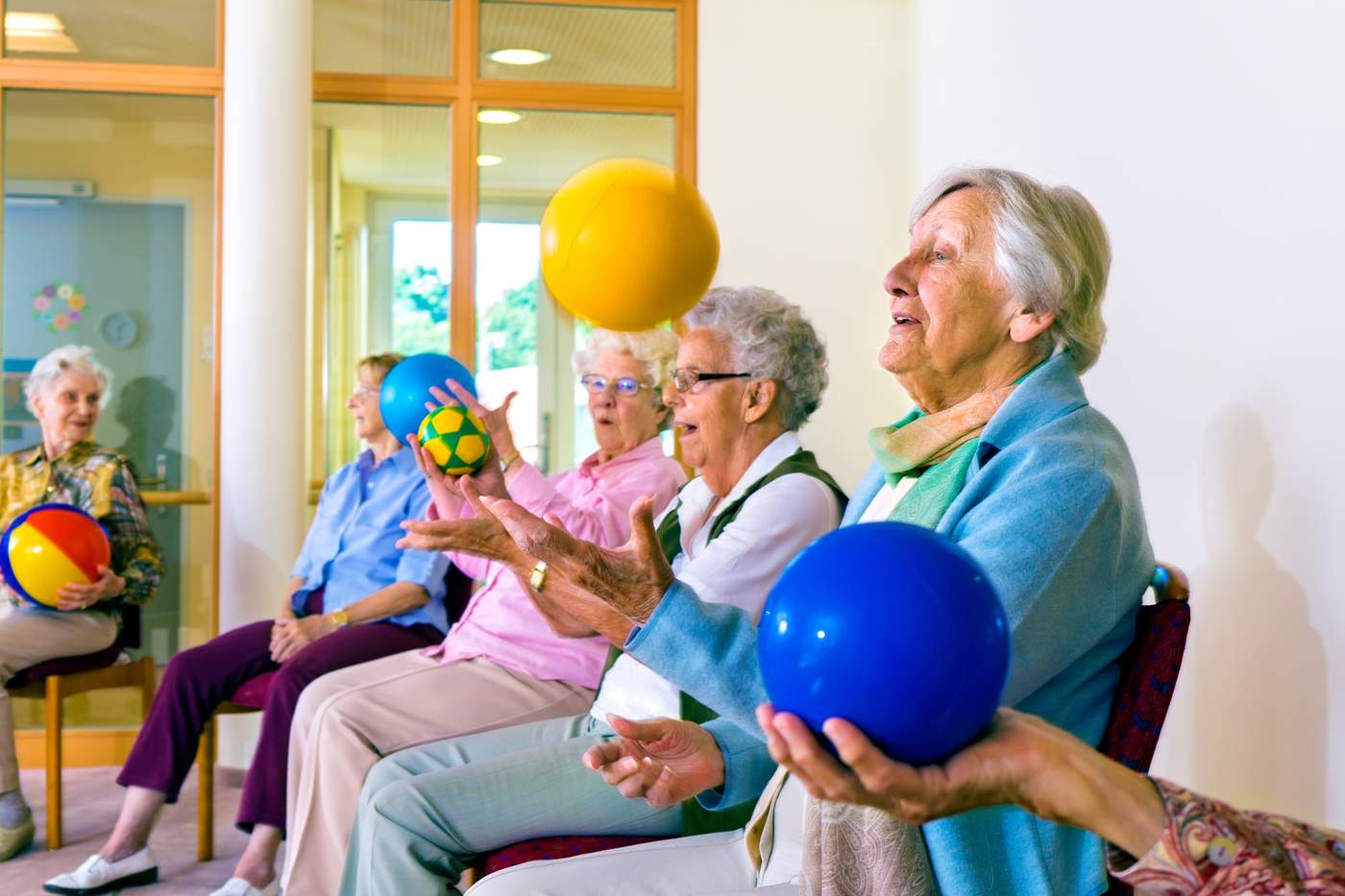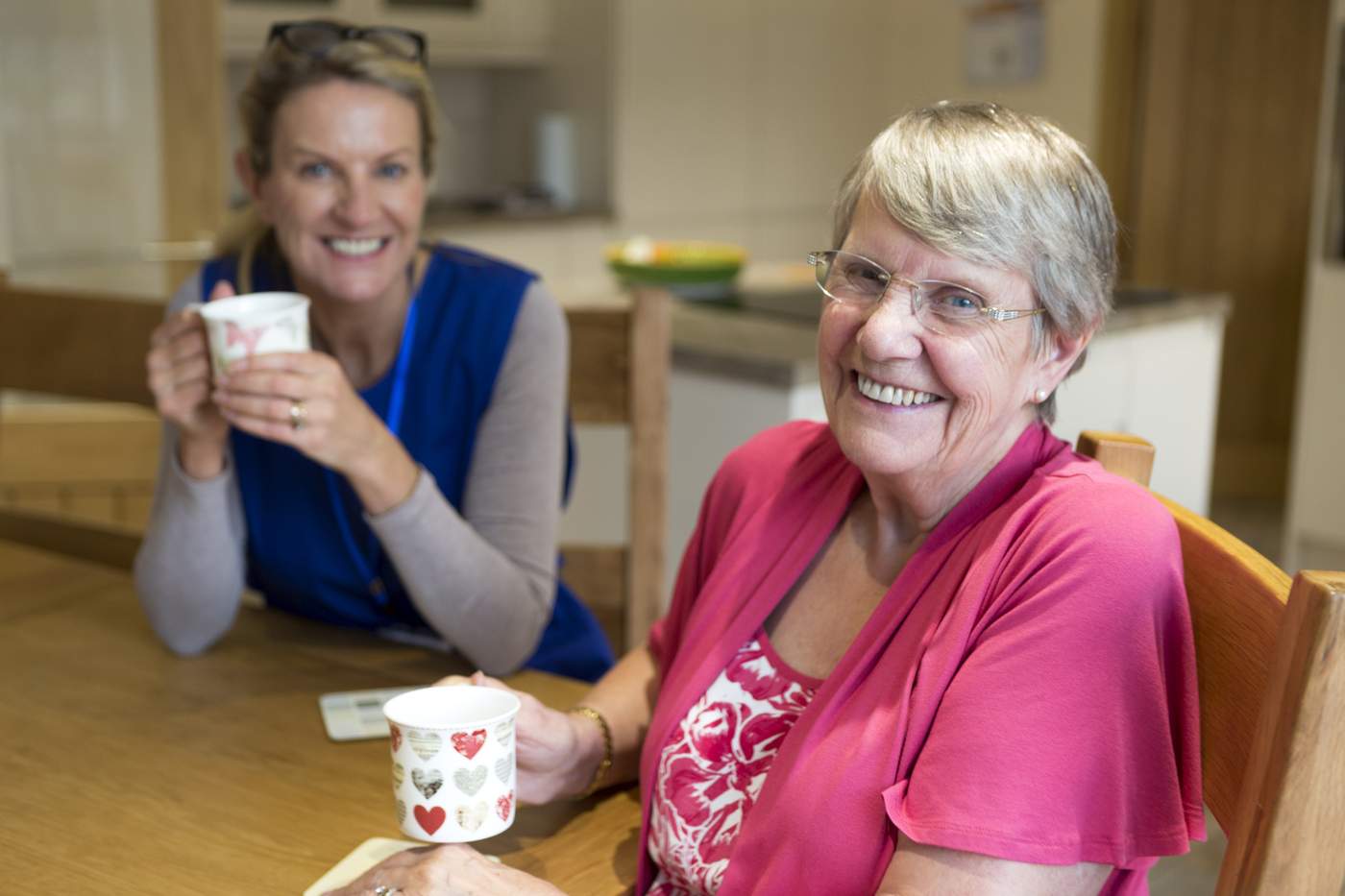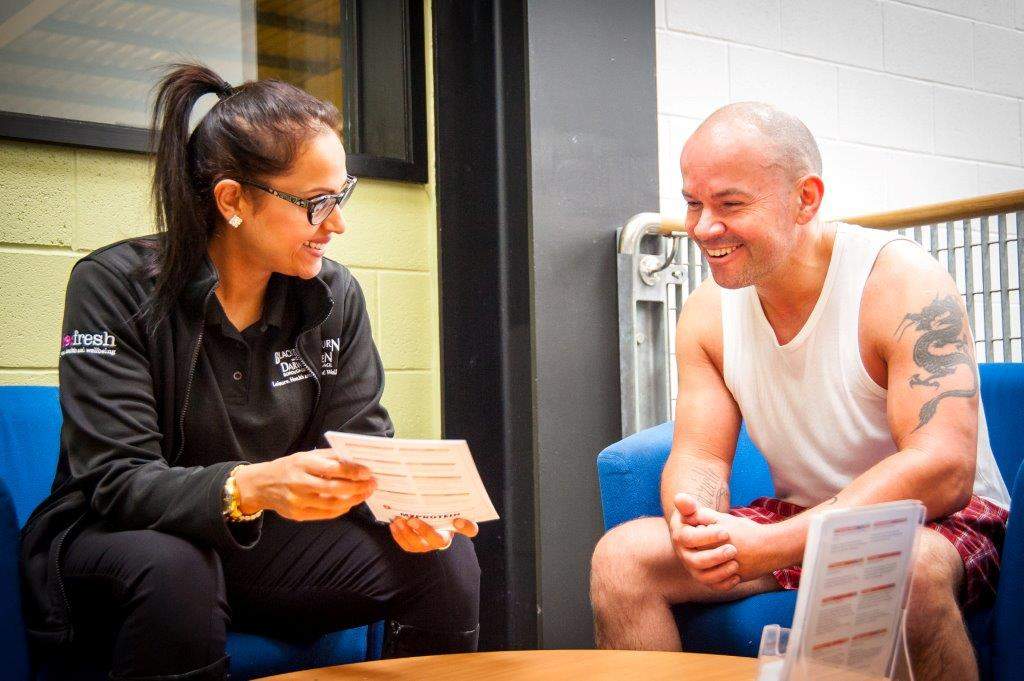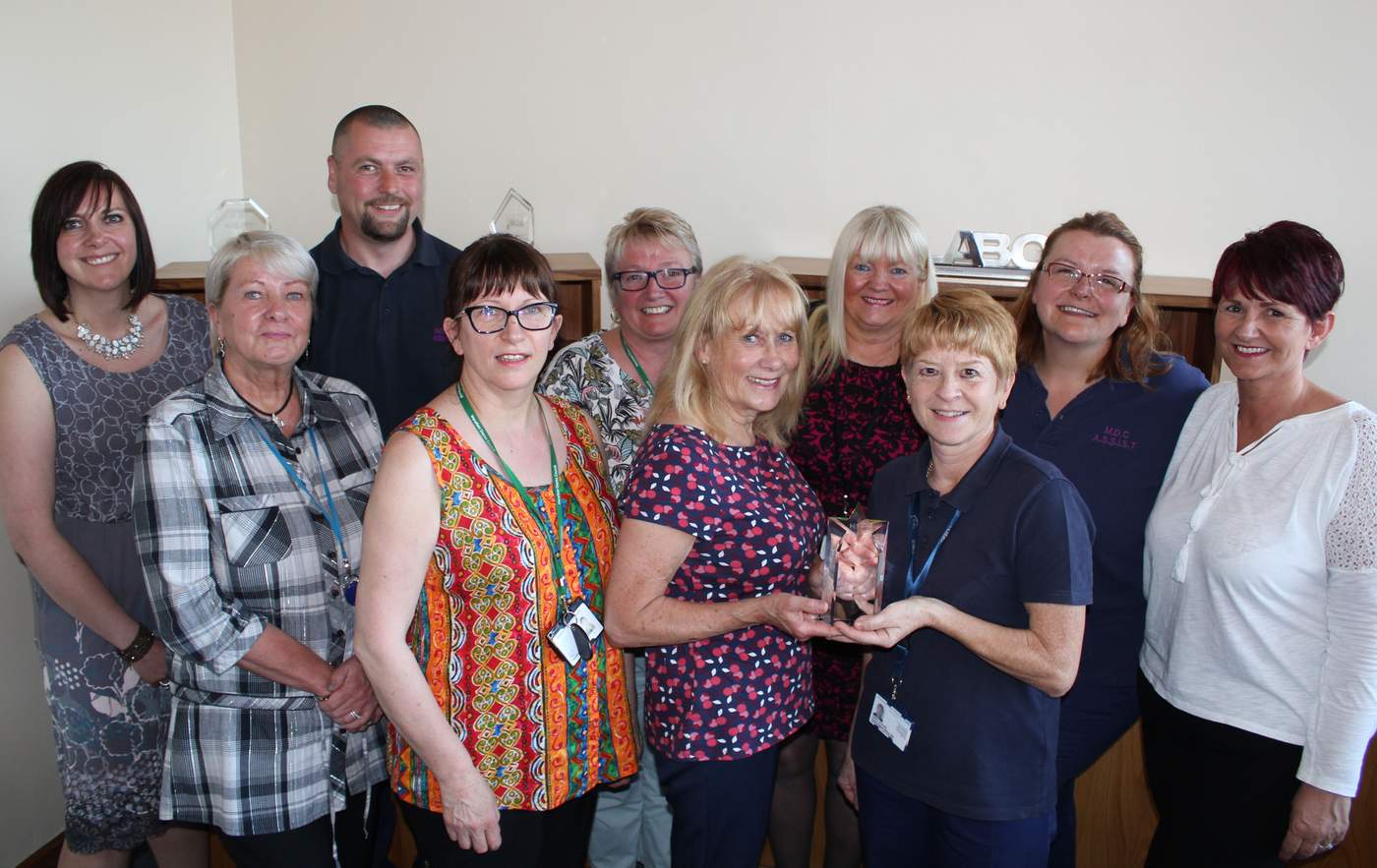NICE Shared Learning Awards 2017
Read about the finalists.
June 2017

The NICE shared learning awards give NHS organisations, the voluntary sector and others the chance to submit exemplary examples of how they have put our guidance and standards into practice.
Each year, the awards are judged and shortlisted by a panel of experts here at NICE. The winner is selected at the NICE annual conference.
This year, we received 66 shared learning examples, of which 20 were shortlisted. There were 4 top finalists who were invited to present at the conference.
We interviewed the top 4, but only one of them was crowned the winner of the 2017 awards.
Read on to find out more.....

Emma Busby from Staffordshire and Stoke on Trent Partnership NHS Trust talks to us about the project behind their NICE shared learning awards.
1. What project did you submit to NICE for a 2017 shared learning award?
Our project is about the management and care of osteoarthritis, which is one of the main causes of disability in the elderly.
When NICE published their guidance on this condition in 2014, we got our heads together to see how we could weave the recommendations into our current services. And eventually, the osteoarthritis self-management and independent living support group (OASIS) was born!
2. How did you come up with the idea for OASIS?
We spoke to our patients about what the new NICE guidance said and how we wanted to integrate it into their treatment.
This led to the development of ten exercises our patients could complete in a circuit. The exercises were completed in a gym, and included strengthening exercises for legs with a resistance band and step ups.
Their experience has helped us to create a valuable service. We can even grade the exercise difficulty so that each session is tailored to the person’s ability and fitness.
3. How does OASIS work?
OASIS aims to build a person’s strength and fitness so that they can better manage their condition. It is essentially an exercise regime that follows the NICE guidance and was built using our patient’s experiences and opinions.
4. Were there any hurdles along the way?
Getting the circuit right was probably the hardest part. The exercises weren’t chosen on a whim. They had to be measurable and based on evidence in order to really have an impact.
5. How did it feel to be shortlisted as one of the top four award entries?
To be shortlisted was beyond our expectations. It’s an absolute credit to everyone who has been involved in the group, and to the patients who take the class. This really is all for them.
6. What is the best piece of advice you would give to other people who are considering entering the NICE Shared Learning Awards next year?
Just do it. Act on a good idea. Use the experiences of your patients to help you develop the best service possible. And don’t be afraid to showcase your work.
You never know what journey can start from a simple idea. Take the first step and see where it leads.

Funmi Buraimoh from Guys and St. Thomas' tells us a little more about the project behind their 2017 NICE shared learning awards entry.
1. What project did you submit to NICE for a 2017 shared learning award?
We set up a specialist antenatal clinic for women experiencing long-term high blood pressure during their pregnancy.
The main aim was to ensure that each member of the antenatal team was always fully informed in the health of both mum and baby so that any problems could be identified, and addressed as soon as possible. But we also created information leaflets and web pages to raise awareness.
2. How did you come up with the idea of a dedicated clinic?
Our project was created following a serious incident where a mother with uncontrolled blood pressure had a stillborn baby. We wanted to transform the care we offered and help ensure this does not happen again.
3. What did you do to make sure the clinic worked?
Getting the right people involved from the start was key to getting the project off the ground, whether that was the midwives, obstetricians, pharmacists, IT experts or the communications team. It was great to have the quality improvement & patient safety (QIPS) team on board too. They drove the project forward.
4. Were there any hurdles along the way?
The biggest hurdle was finding time to do what was needed. We probably underestimated the time we would need to devote to the project – but the enthusiasm kept us going, along with the knowledge we were making a difference.
5. How did it feel to be shortlisted as one of the top four award entries?
We are really proud of what we’d managed to achieve as a team, and we wanted to share that with a wider audience. So it felt fantastic to be recognised by NICE. We’re hoping that our story will encourage others to improve clinical services when they see an opportunity.
6. What is the best advice you can give to others who are considering entering the shared learning awards next year?
We would tell them to go for it!
We didn’t think what we were doing was special at the time, but now we see that we were and continue to be. Everyone brought their own expertise, contributed to the project and supported each other. This made the end result so much more than the sum of its parts.

Hayley Barsby, interim Chief Executive Officer at Mansfield District Council tells us a little more about the project behind their 2017 NICE shared learning awards entry.
1. What project did you submit to NICE for a 2017 shared learning award?
In October 2014 our pilot ASSIST project was run within the Sherwood Forest Hospital Foundation Trust. The project sought to help vulnerable people to be discharged quickly and safely from hospital to home. We saw a real benefit to the project and wanted to share this work.
2. How did you come up with the idea for ASSIST?
A delay in discharging patients, or ‘bed blocking’ as it is referred to in the media is a problem in most hospitals. NICE published guidance on the transition of people from hospital to home care, in 2015. The ASSIST project follows most of NICE’s recommendations.
3. How does ASSIST work?
Our district council’s housing needs team works with the health and social care staff as soon as someone is admitted to the hospital. Together they identify and address the factors surrounding patient discharge.
Our focus is to help the most vulnerable people, for example those who are at risk of becoming homeless as a result of their discharge from hospital. We work to ensure that there is adequate care, support and that appropriate adaptations are made to allow for a timely transfer of care from hospital to home.
4. Were there any hurdles along the way?
Our project still faces significant challenges; it is difficult to sustain due to the way that health and social care organisations are funded. The benefits are evident but who will fund the project in the long-term?
5. How did it feel to be shortlisted as one of the top four award entries?
Being recognised by healthcare professionals is a real privilege and makes our contribution to improving patient care even more rewarding.
6. What is the best piece of advice you would give to other people who are considering entering the NICE shared learning awards next year?
We encourage innovative projects to submit to NICE so that we can share knowledge and best practice.

Alison Abbott, from Blackburn and Darwen borough council tells us a little more about the project behind their 2017 NICE shared learning awards entry.
1. What project did you submit to NICE for a 2017 shared learning award?
We developed a ‘wellbeing service’ to help make it easier for people to access the support they needed to make lifestyle changes and improve their health. The project has been a success, and this is what we submitted for a NICE award.
2. How did you come up with the idea for the service?
Many of us smoke, don’t do enough exercise and carry too much weight despite knowing that these things can cause long term health problems.
More often than not people will say that access to support is a stumbling block in improving their situation. We wanted to take that excuse away and give people the support they need to make real changes.
3. How does the wellbeing service work?
The service brings a wide range of services into a single access point. This means we had to remodel how the existing services were offered. Good communication between all healthcare professionals involved was key to getting this arranged.
Health Trainers are a fundamental part of the wellbeing service. They provide information, support and guidance to individuals wanting to make changes towards a healthier lifestyle. They help, on average, 42 people a week.
4. Were there any hurdles to setting up the service?
Not as many as we had anticipated. Good working relationships with colleagues meant that getting buy-in and support for our project was fairly smooth. Budgets have been a challenge, but we’ve worked through them.
5. How did it feel to be shortlisted as one of the top four NICE award entries?
It was exciting! Sometimes we are all so busy that we don’t get time to reflect properly on how much has been achieved in a relatively short time, so to be recognised was a great honour.
6. What is the best piece of advice you would give to other people who are considering entering the NICE shared learning awards next year?
Don’t waste too much time considering, just do it. The more we can learn from others and find out what works means better health for everyone. Sharing is caring.


